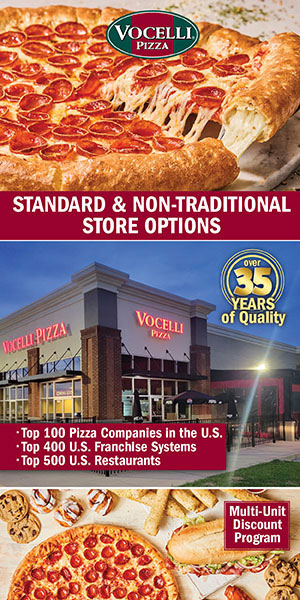A Tenant's Guide To Understanding CAM Charges, Part 2

This is part 2 of a 3-part series on CAM (Common Area Maintenance) charges. Part 1 explained what CAM charges are, why they’re important to understand, and how they are calculated. Part 2 here zeroes in on the first two of “4 Steps To Understanding Your CAM Obligations.” In March we’ll present Steps 3 and 4.
Step 1: Clearly define what’s excluded from CAM costs
While retailers and landlords may agree that CAM charges include direct costs for management, maintenance, and repair of common areas, having both parties agree on what they should and should not include can be a challenge. If the lease language lacks clarity in defining what expenses are specifically included in the CAM calculations and what expenses are excluded, it leaves room for unexpected or excessive CAM charges to be passed through to the tenant.
There is no clear industry standard definition of what particular CAM charges should be included. Therefore, a retail tenant should carefully review the list of CAM costs the landlord is proposing to pass through and begin to negotiate some of those items.
The following is a partial suggested list of ordinary CAM costs that a retailer should ask their landlord to exclude:
- Capital expenditures of any kind
- Any costs related to maintenance, repair, or replacement of any structural component of the shopping center
- Expenses related to foundation issues
- Any expenses related to repairs of roof structure
- Any ownership-related costs (i.e., costs that do not benefit the tenant, such as charges for depreciation, mortgage interest, debt service, or financing fees)
- Legal fees, leasing commissions, and professional fees incurred by the landlord from negotiating other leases or resolving disputes
- Costs to the landlord for renovating, improving, decorating, or painting vacant space for other tenants
- Costs incurred by the negligent acts of the landlord
- Costs or expenses that are covered by insurance the landlord is required to maintain
Step 2: Understand how CAM costs are calculated: GLA vs GLOA
A tenant’s pro-rata share provision is a common method for cost allocation. But beware of how the lease language is written, because it can increase the tenant’s liability of costs by directly affecting the math, and subsequently the outcome of its pro-rata share formula.
In CAM charge calculations, GLA (Gross Leasable Area) and GLOA (Gross Lease Occupied Area) are terms used to describe different measurement methods for determining a tenant’s proportionate share of CAM expenses. They are both related to the calculation of CAM charges, but are based on slightly different concepts.
1) GLA (gross leasable area)
GLA refers to the total square footage or area within a property that is available for lease to tenants. It includes all the space that is intended for occupancy by tenants, both leased and vacant. When GLA is used in CAM calculations, a tenant’s pro-rata share is typically based on their leased space as a percentage of the total GLA of the property. In other words, it considers both leased and vacant space in the property. For example, if a tenant leases 1,000 s.f. in a property with a total GLA of 10,000 s.f., their pro-rata share of CAM expenses would be 10% (1,000 / 10,000).
2) GLOA (gross lease occupied area)
GLOA refers to the total square footage or area within a property that is currently leased or generating rental income. It excludes any vacant or unleased space in the property. When GLOA is used in CAM calculations, a tenant’s pro-rata share is based on their leased space as a percentage of the total GLOA of the property. This approach focuses solely on the space that is currently generating rental income. For example, if a tenant leases 1,000 s.f. in a property with a total GLOA of 8,000 s.f. (excluding vacant spaces), their pro-rata share of CAM expenses would be 12.5% (1,000 / 8,000).
The key difference between GLA and GLOA in CAM charge calculations is the inclusion or exclusion of vacant or unleased space. GLA considers all space within the property, while GLOA focuses only on the space that is currently leased or generating rental income. Depending on the lease agreement and local market conditions, landlords and tenants may choose to use either GLA or GLOA as the basis for calculating CAM charges. To avoid a misunderstanding during review of the CAM reconciliation(s), it’s essential for both parties to clearly define and understand – in advance – which measurement method is specified in the lease agreement.
Bottom line, if a retailer agrees to a pro-rata share allocation for CAM charges, it is critical to understand the lease language when calculating their pro-rata share percentage, and to have a clear picture of what landlord expenses can and cannot be passed through. One of the biggest perils for a retailer is thinking a formula looks straightforward and easy to calculate without considering how the written lease language can affect the outcome of the equation.
Next time: Step 3: Negotiate a cap on the annual increases of CAM charges, and Step 4: Always insist on audit rights.
Taj Adhav is the founder of Leasecake, an award-winning lease and location management platform built for multi-unit operators. Leasecake was built to help franchisees and franchisors focus on what matters when it matters, saving time, minimizing risk, and better managing growth through easy-to-use, flexible software. Contact him at [email protected].
Share this Feature
Recommended Reading:
| ADVERTISE | SPONSORED CONTENT |
FRANCHISE TOPICS
- Multi-Unit Franchising
- Get Started in Franchising
- Franchise Growth
- Franchise Operations
- Open New Units
- Franchise Leadership
- Franchise Marketing
- Technology
- Franchise Law
- Franchise Awards
- Franchise Rankings
- Franchise Trends
- Franchise Development
- Featured Franchise Stories
| ADVERTISE | SPONSORED CONTENT |

$750,000





 The multi-unit franchise opportunities listed above are not related to or endorsed by Multi-Unit Franchisee or Franchise Update Media Group. We are not engaged in, supporting, or endorsing any specific franchise, business opportunity, company or individual. No statement in this site is to be construed as a recommendation. We encourage prospective franchise buyers to perform extensive due diligence when considering a franchise opportunity.
The multi-unit franchise opportunities listed above are not related to or endorsed by Multi-Unit Franchisee or Franchise Update Media Group. We are not engaged in, supporting, or endorsing any specific franchise, business opportunity, company or individual. No statement in this site is to be construed as a recommendation. We encourage prospective franchise buyers to perform extensive due diligence when considering a franchise opportunity.